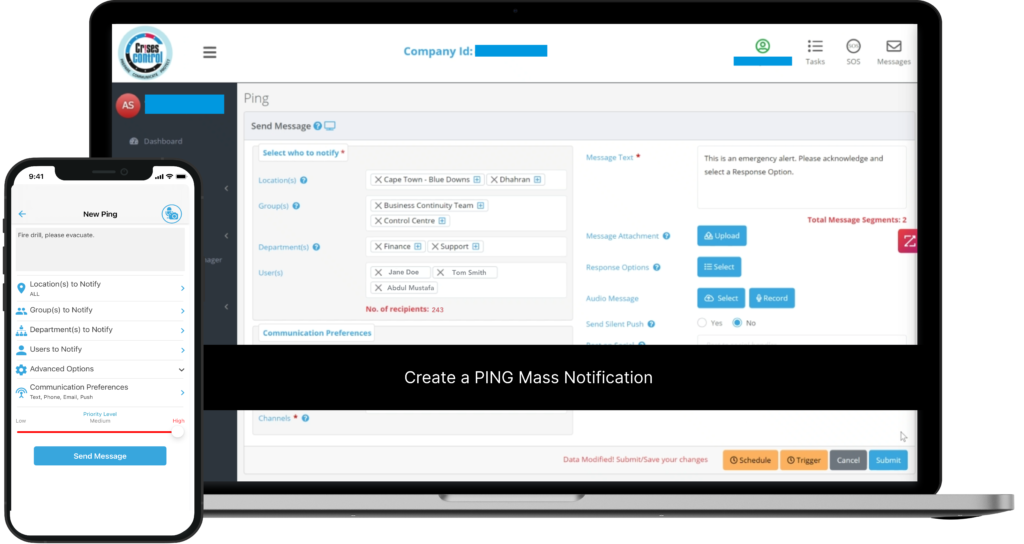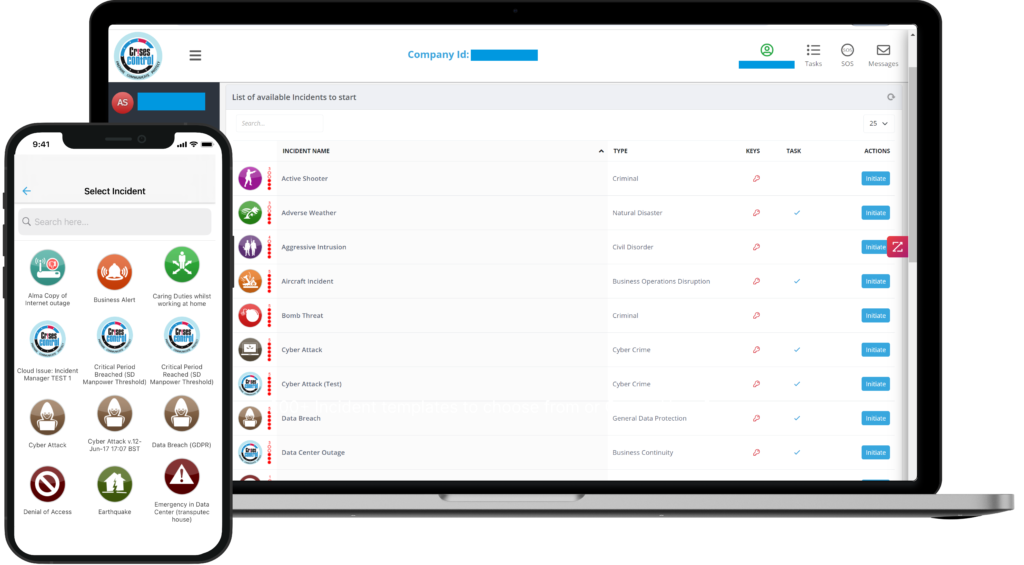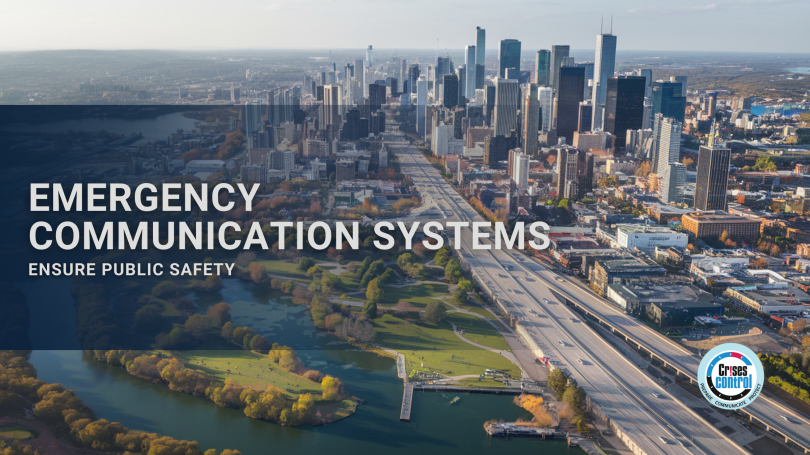Written by Anneri Fourie | Marketing Executive
In today’s world, where crises can unfold in a matter of minutes, the ability to communicate swiftly and effectively is crucial for protecting public safety. From natural disasters to cybersecurity incidents, organisations are increasingly dependent on robust Emergency Communication Systems to safeguard both their people and their assets. These systems don’t just send out emergency alerts; they also gather critical real-time feedback, enabling better decision-making when every second counts.
In this blog, we’ll explore the importance of Emergency Communication Systems in improving public safety and crisis management. We’ll discuss how these systems work, their benefits for organisations, and how Crises Control offers a comprehensive solution for businesses seeking to stay ahead of emergencies.
The Role of Emergency Communication Systems in Public Safety
When a crisis hits, there’s no room for delays. Whether it’s a fire, a major weather event, or an active security threat, the ability to notify affected individuals quickly and receive their responses can make a significant difference. Emergency Communication Systems for Public Safety provide a structured, reliable, and rapid way to send mass notifications and safety instructions while also collecting real-time information from people on the ground.
Imagine an industrial facility facing a chemical spill. The facility’s management needs to notify all workers, particularly those in the danger zone, with precise instructions. At the same time, workers need to report back on their safety status, providing management with the information they need to coordinate an effective response. This real-time feedback enables decision-makers to quickly identify areas of risk and provide help where it’s needed most.
Key Features of Effective Emergency Communication Systems
Not all Emergency Communication System solutions are created equal. For a system to truly enhance public safety, it needs to include several key features:
- Multi-Channel Alerts: Notifications should be sent through various platforms such as SMS, email, mobile apps, and voice calls. This ensures that no matter where someone is or what device they’re using, they receive the message.
- Real-Time Updates: The system should remain open to receiving continuous feedback and updates. This allows responders to keep track of changing situations and react accordingly.
- Geo-Targeting: Effective Emergency Communication Systems allow messages to be sent to people in specific locations, focusing resources where they are needed most and avoiding confusion for those unaffected.
- Seamless Integration with Existing Systems: A well-designed Emergency Communication System integrates smoothly with business continuity software, incident management platforms, and other public safety software, ensuring that emergency alerts are aligned with the broader crisis management framework.
These features form the foundation of an effective Emergency Communication System, ensuring that organisations can communicate quickly and efficiently, no matter the nature of the emergency.
How Emergency Communication Systems Enhance Crisis Management
During a crisis, maintaining clear communication channels can prevent chaos, minimise risks, and save lives. Here are the key ways in which Emergency Communication Systems improves crisis management:
1. Instant Alerts to Minimise Risk
Time is of the essence in any emergency. A top-tier Emergency Communication System enables businesses to send immediate alerts to employees, customers, and other stakeholders. Whether it’s a severe weather warning or a workplace security breach, Emergency Communication Systems ensures that the right message gets to the right people as fast as possible.
For instance, during a data breach, an Emergency Communication System can notify IT teams and key personnel to take immediate action, preventing further damage. In a factory fire, workers can be directed to safe exits. By reducing delays in communication, Emergency Communication Systems help mitigate risks and provide clear instructions to minimise harm.
2. Two-Way Communication for Better Decision-Making
One of the standout features of modern Emergency Communication Systems is its ability to facilitate two-way communication. This feature allows employees, first responders, or even members of the public to report their status or provide critical information about the situation.
For example, during an evacuation, workers can check in to confirm their safety, allowing managers to see who is accounted for and who may still be at risk. By gathering real-time data, businesses can make informed decisions more quickly, adapting their response to the situation as it unfolds.
3. Enhanced Coordination with First Responders
In serious emergencies, collaboration with local authorities is crucial. Emergency Communication Systems integrates with public safety software, making it easier to coordinate efforts between a company and first responders like the fire brigade, police, or medical teams. This seamless communication allows for a faster, more organised response, which is critical for reducing damage and loss of life.
For example, during a terror threat at a public venue, an Emergency Communication System could notify security personnel and coordinate with law enforcement simultaneously. The real-time exchange of information can help contain the threat and organise evacuations or lockdowns more effectively.
Interested in our Ping Mass Notification Software?
Efficiently alert everyone in seconds at scale with our Mass Notification System – PING, get the message out fast and ensure rapid response and recovery.

Benefits of Emergency Communication Systems for Public Safety
The advantages of using Emergency Communication Systems for Public Safety go beyond merely sending alerts. Here’s how they enhance safety for organisations and the communities they serve:
1. Faster Response Times
Automated alerts and predefined responses cut down manual communication processes, reducing response times in critical situations. The faster information is disseminated, the quicker teams can mobilise to address the emergency.
2. Centralised Control
Many Emergency Communication Systems provide a centralised dashboard for monitoring and managing all communications during an emergency. This reduces the risk of conflicting information and ensures that crisis managers have a clear view of all updates and responses, keeping everyone on the same page.
3. Accountability and Transparency
With real-time status reports from staff or other stakeholders, management teams can track who is safe and who might need help. This accountability ensures that no one is left behind and allows organisations to maintain transparency in their emergency responses.
4. Seamless Integration with Business Continuity Plans
Emergency Communication Systems often integrates with business continuity software, triggering alerts based on predefined criteria in line with disaster recovery and continuity plans. This allows organisations to stay operational even during significant disruptions, reducing downtime and keeping the business running as smoothly as possible.
Crises Control: A Leading Solution for Emergency Communication
When it comes to reliable Emergency Communication Systems, Crises Control stands out for its comprehensive suite of tools designed to enhance public safety and streamline crisis management.
Here’s how Crises Control can help your organisation:
1. Ping Mass Notification
Crises Control’s Ping Mass Notification system allows you to send rapid alerts across multiple channels, including SMS, email, app notifications, and voice calls. This ensures that your messages reach the intended recipients quickly, regardless of where they are or what device they are using.
2. Two-Way Communication and SOS Panic Button
Crises Control enables two-way communication, empowering employees to check in and report their status. The SOS Panic Button feature also allows individuals in distress to send a quick alert to management, offering real-time insight into the safety of your people.
3. Simplify User and Visitor Management with QR Code Registration
Crises Control’s QR Code Registration feature simplifies the process of adding users and visitors to the system. It offers two key functionalities:
- User Registration: Users can register by scanning a QR code with their mobile device. This QR code directs them to a page where they can enter their details and submit them for approval. Once approved, they are automatically added to the system, eliminating the need for admin staff to manually input information or update spreadsheets. This is ideal for registering permanent or temporary staff, interns, and contractors quickly and efficiently.
- Visitor Registration: For daily visitors, the QR Code Registration integrates with the Public Alert Module, enabling companies to provide a QR code for visitors who wish to receive notifications during their stay. By scanning the code, visitors can submit their mobile number and get added to the Public Alerts list. If an incident occurs, the crisis manager can easily notify these visitors through the system.
4. Incident Management and Reporting
With Crises Control, you can not only manage the crisis in real-time, but also generate reports and an audit trail to review how incidents were handled. This transparency and accountability help improve future crisis responses and ensure your organisation continuously learns from its experiences.
5. Seamless Integration
Crises Control integrates with existing public safety software and business continuity tools, ensuring that all systems work together during an emergency. This allows for a smooth, coordinated response between your organisation and external agencies, such as first responders.

Interested in our Incident Management Software?
Customise your Crisis Incident Management Software to meet your specific needs with our flexible tools & stay connected and informed during the crisis and incident management process
Conclusion: Strengthen Your Public Safety and Crisis Management with Crises Control
A reliable Emergency Communication System is essential for protecting public safety and ensuring effective crisis management. Whether it’s sending rapid alerts, facilitating two-way communication, or integrating with public safety and business continuity tools, Crises Control provides a robust platform to meet your needs.
Don’t wait for a crisis to strike—contact Crises Control today for a free demo and see how our platform can help safeguard your people and assets.
Request a FREE Demo









